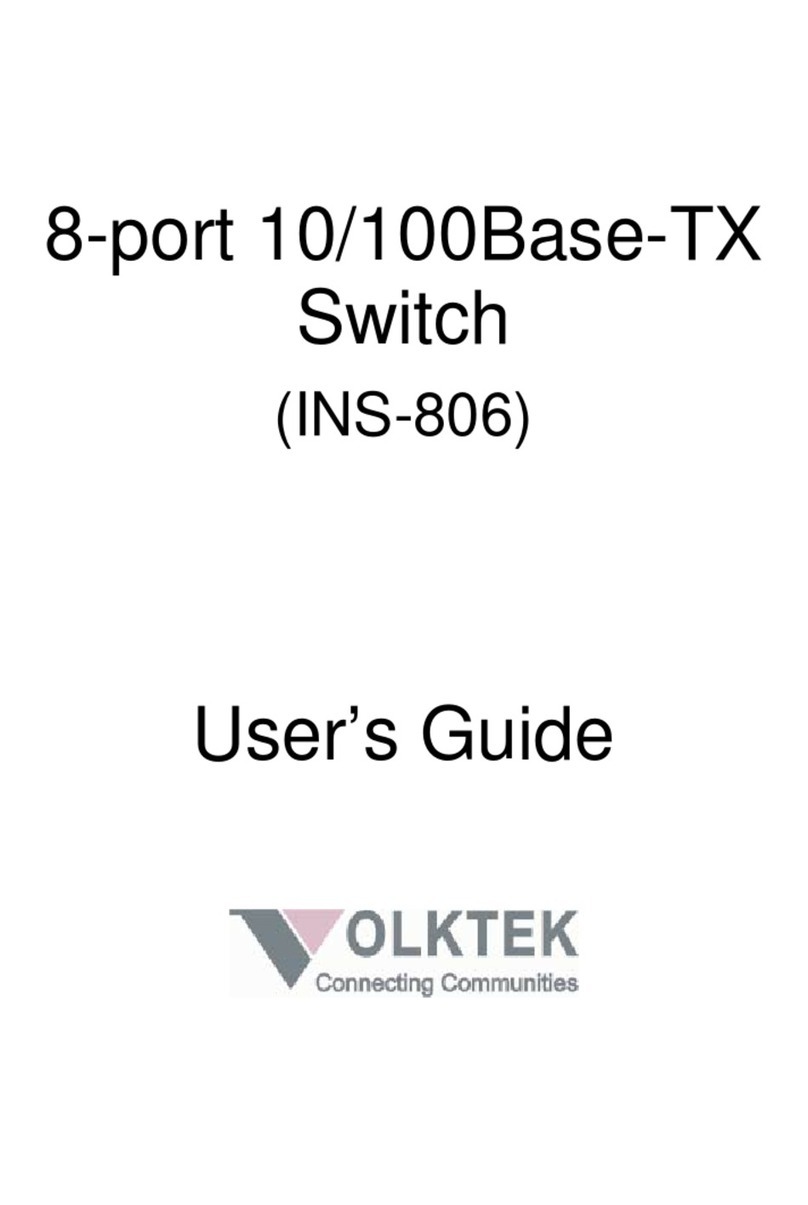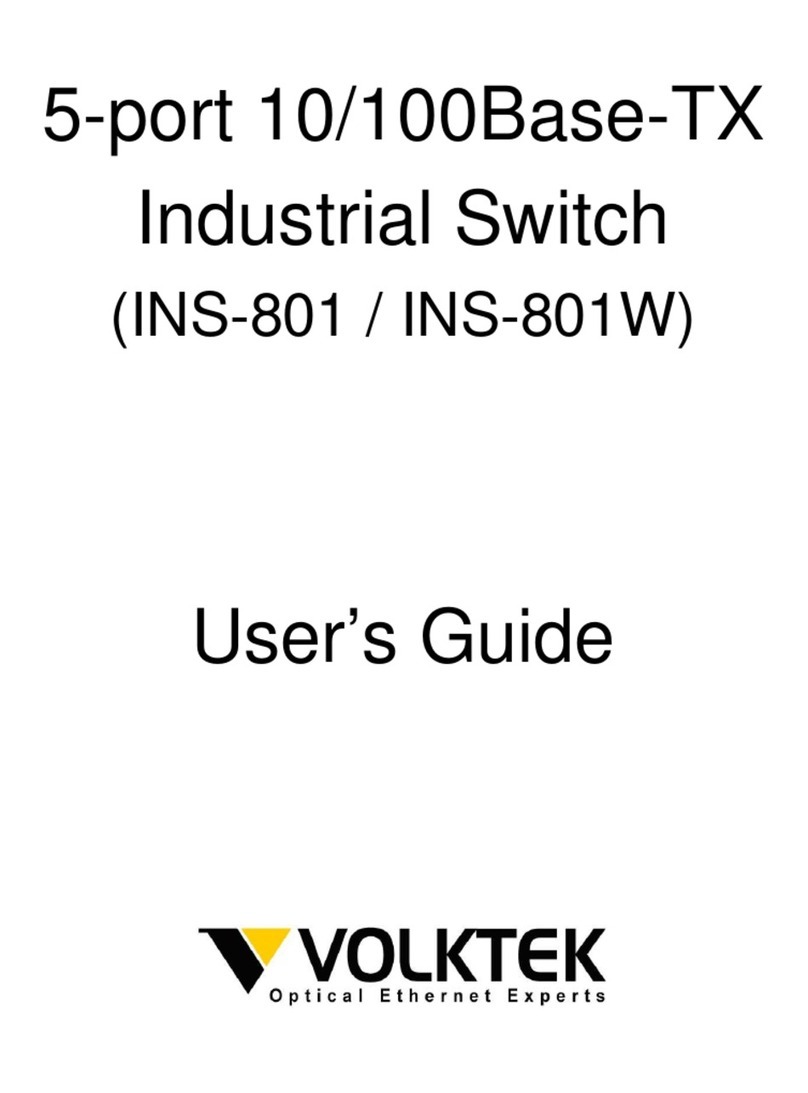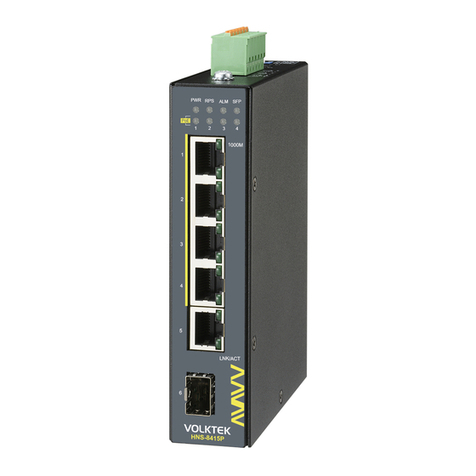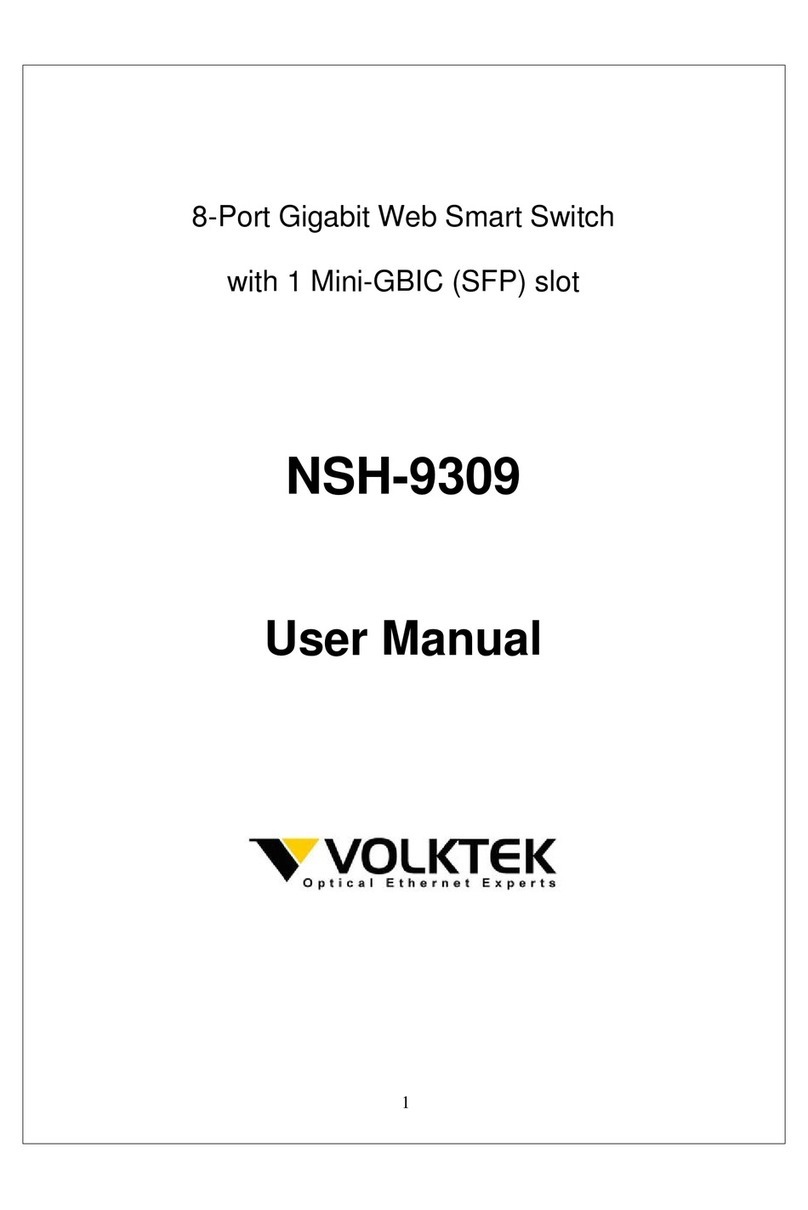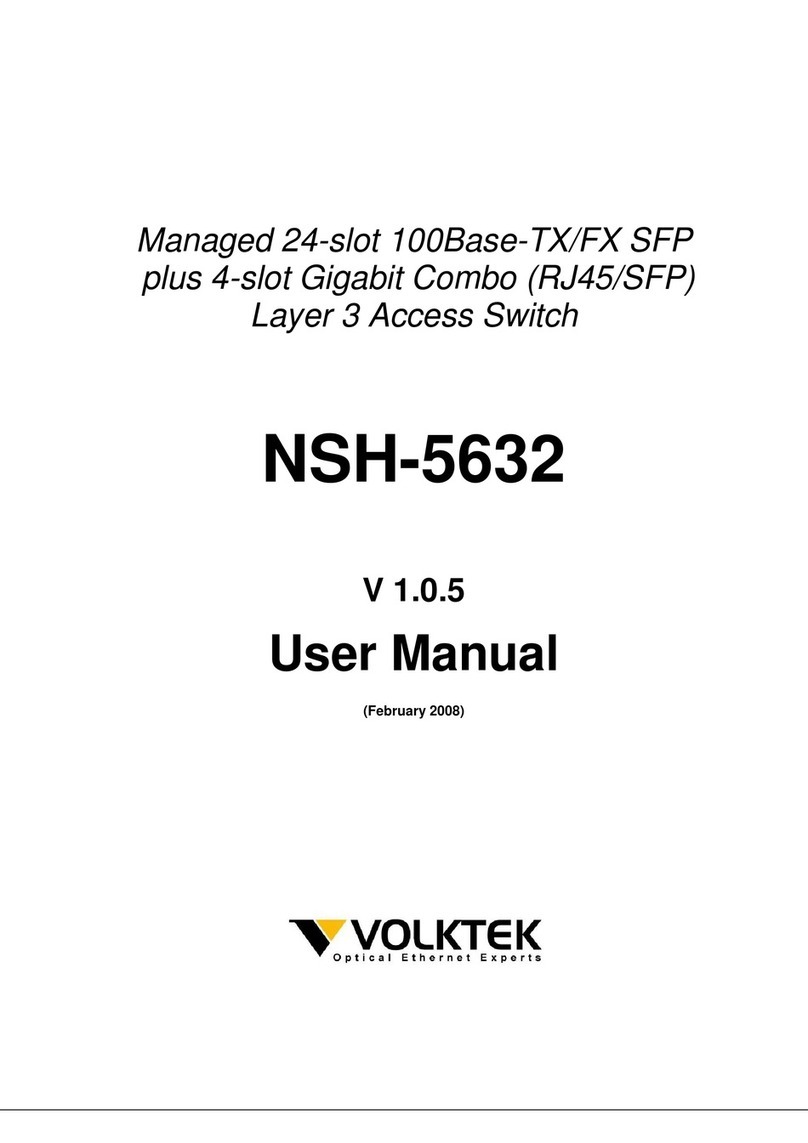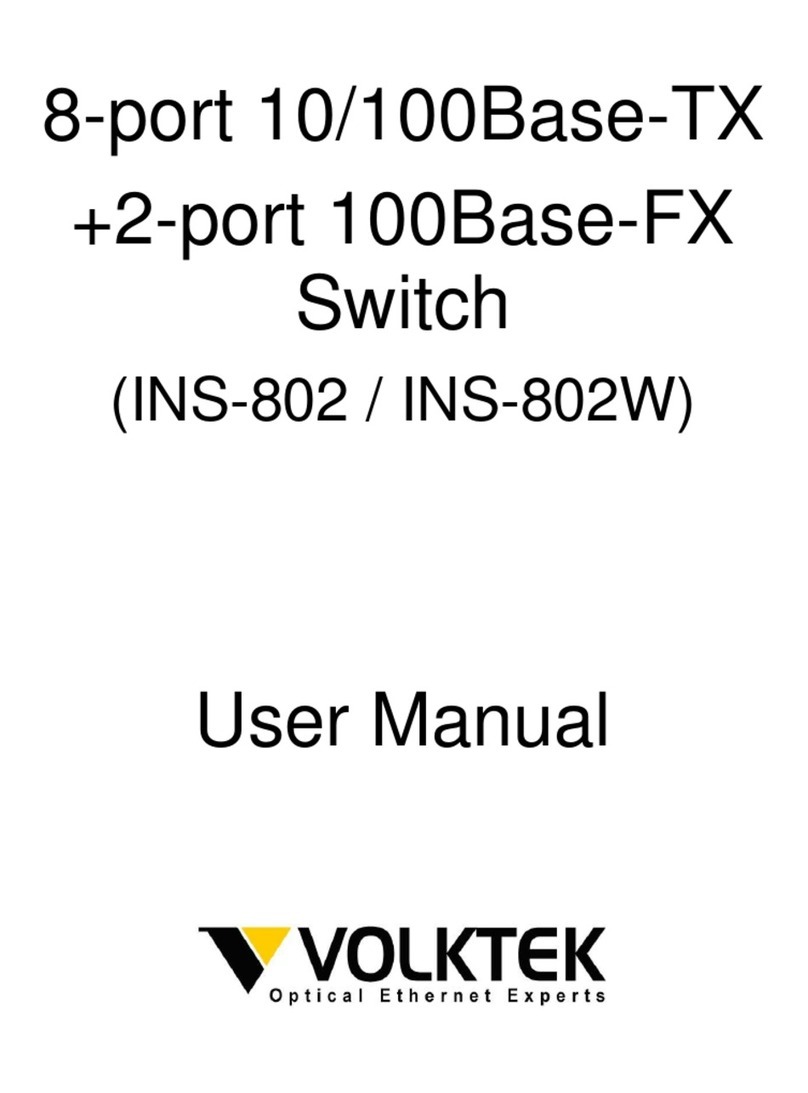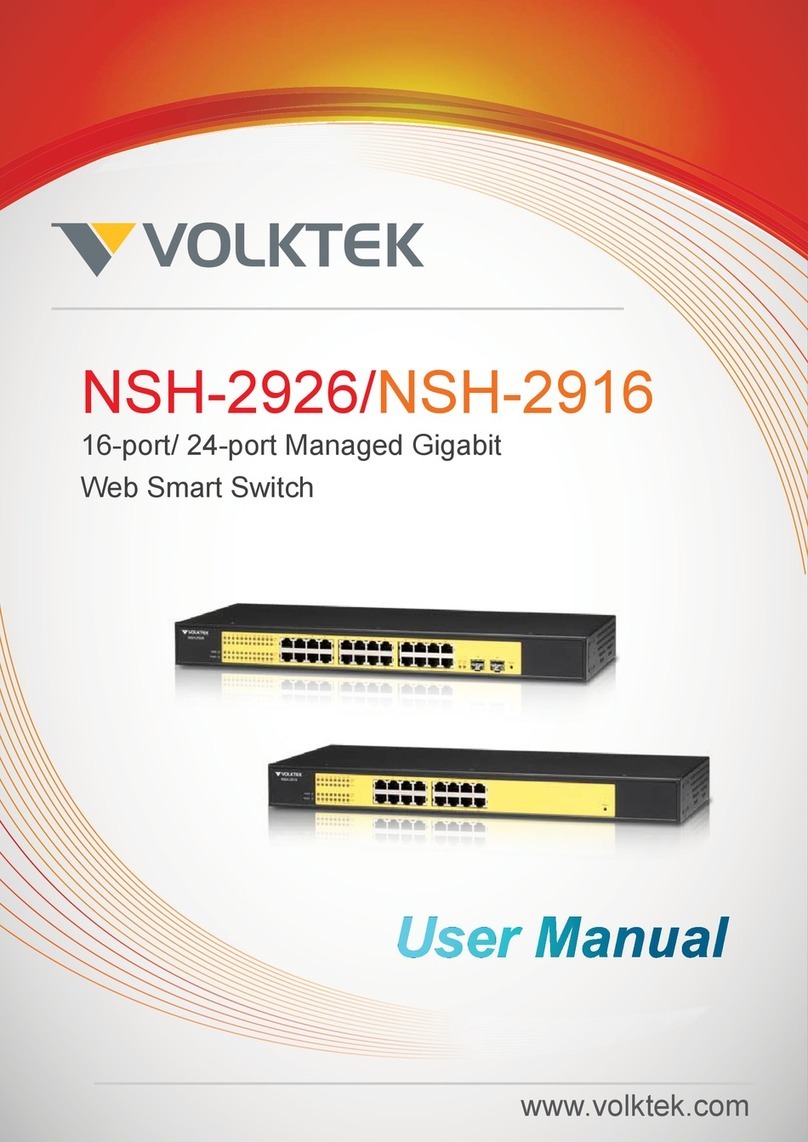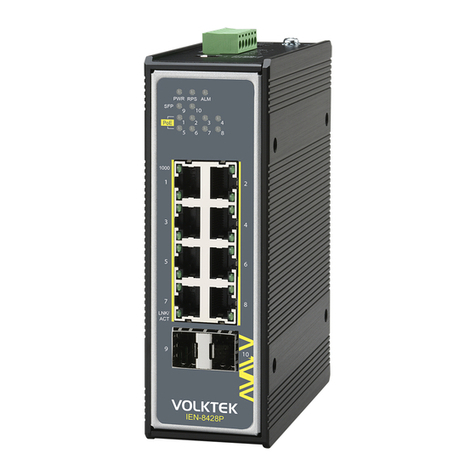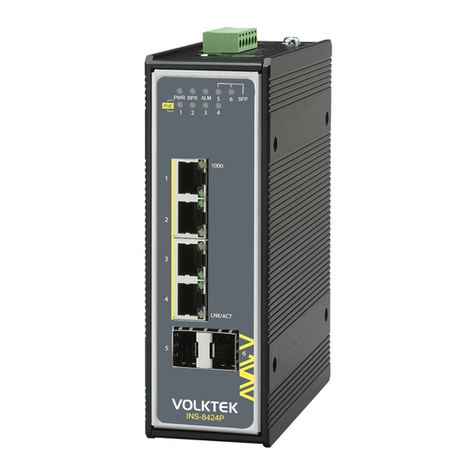TABLE OF CONTENT
1 INTRODUCTION ...........................................................................................................................................................3
1.1 MAIN FEATURES .........................................................................................................................................................4
1.2 START TO MANAGE THIS SWITCH................................................................................................................................5
2 WEB MANAGEMENT...................................................................................................................................................6
2.1 CONFIGURATIONS........................................................................................................................................................7
2.1.1 System information.............................................................................................................................................7
2.1.2 Ports ...................................................................................................................................................................9
2.1.3 Port-based VLAN .............................................................................................................................................10
2.1.4 Tag-based VLAN...............................................................................................................................................11
2.1.5 Port Trunking ...................................................................................................................................................13
2.1.6 Port Mirroring..................................................................................................................................................14
2.1.7 Quality of Service .............................................................................................................................................15
2.1.8 Storm Control ...................................................................................................................................................17
2.1.9 LACP................................................................................................................................................................18
2.1.10 RSTP...............................................................................................................................................................19
2.1.11 IGMP ..............................................................................................................................................................21
2.1.12 802.1x.............................................................................................................................................................22
2.1.13 PoE status and command operation...............................................................................................................23
2.2 MONITORING ............................................................................................................................................................24
2.2.1. Port Statistics ..................................................................................................................................................24
2.2.2 Detailed Port Statistic ......................................................................................................................................24
2.2.3 LACP Status .....................................................................................................................................................25
2.2.4 RSTP Status ......................................................................................................................................................25
2.2.5 IGMP Status .....................................................................................................................................................26
2.2.6 Ping ..................................................................................................................................................................26
2.3 MAINTENANCE..........................................................................................................................................................27
2.3.1 Warm Reboot ....................................................................................................................................................27
2.3.2 Factory Default ................................................................................................................................................27
2.3.3 Firmware Update .............................................................................................................................................27
2.3.4 Config File .......................................................................................................................................................28
3.0 TERMINAL MODE MANAGEMENT ....................................................................................................................29
CONTACT INFORMATION ..........................................................................................................................................31
2
